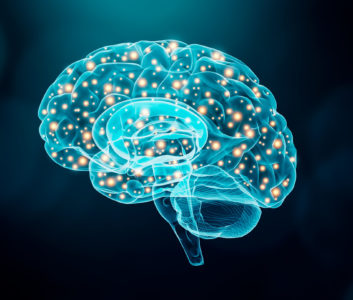 Chronic pain is one of the most common reasons why people visit a doctor’s office, but because of the highly individualized nature of chronic pain, figuring out a diagnosis and effective treatment plan isn’t always easy. It’s tough to really get inside the brain of a person who is battling a chronic pain condition, but that’s exactly what researchers tried to do with this most recent study.
Chronic pain is one of the most common reasons why people visit a doctor’s office, but because of the highly individualized nature of chronic pain, figuring out a diagnosis and effective treatment plan isn’t always easy. It’s tough to really get inside the brain of a person who is battling a chronic pain condition, but that’s exactly what researchers tried to do with this most recent study.
To get a better understanding of chronic pain pathways, researchers implanted electrodes into the brains of four volunteers who were experiencing pain following an amputation (known as phantom limb pain). The participants went about their day as normal while the implants recorded activity in two specific brain regions where researchers believe pain responses occur – the anterior cingulate cortex and the orbitofrontal cortex. Patients were also asked to rate their pain levels on a standard scale several times a day over the course of six months, and when they would do this, they would also press a button that would cause the implants to record their brain signals for 30 seconds.
The captured information was then fed through a machine learning model that could find patterns in the data and predict each patient’s pain level based on the signals in their brain.
“From these models, we found that [electrical waves with] low frequencies in the orbitofrontal cortex corresponded with each of the patients’ subjective pain intensities, providing an objective measure of chronic pain,” said Prasad Shirvalker, a neurologist at the University of California, San Francisco and a co-author of the study, writes in the Conversation. “The larger the shift in low-frequency activity we measured, the more likely the patient was experiencing intense pain.”
Chronic Pain Brain Signals
Shirvalker went on to say that pain is highly individualized, but eventually they hope to decode unique pain signals to come up with patient-specific treatment plans.
“This is the first time ever chronic pain has been measured in the real world,” Shirvalkar tells the New York Times’ Priyanka Runwal. “Every patient actually had a different fingerprint for their pain.”
Researchers also wanted to better understand how the brain responded to painful stimuli, so they applied heat to each patient’s body to see how their brains reacted. They found that acute pain led to a more involved response from the anterior cingulate cortex. Because chronic pain involved a greater reaction from the orbitofrontal cortex, researchers say it’s the first time that there is direct evidence that chronic pain and acute pain involve different areas of the brain.
The data is extremely limited and was only collected on individuals who underwent amputation, but it is a step in the right direction for better understanding chronic pain and how our brains respond to these stimuli. Hopefully future research can continue to build on these findings and focus on more discoveries around the orbitofrontal cortex and its response to pain. The more we learn about how our brains react to chronic pain, the easier it will be to come up with targeted treatments.
In the meantime, if you need a more traditional approach to diagnosing and treating your chronic pain, reach out to Dr. Cohn and his team today at (952) 738-4580